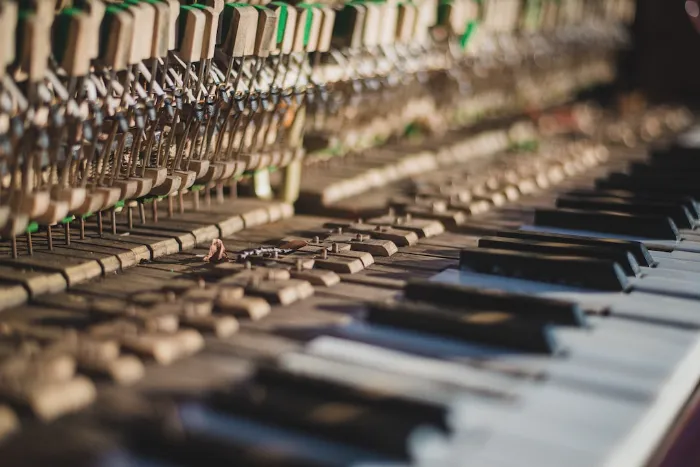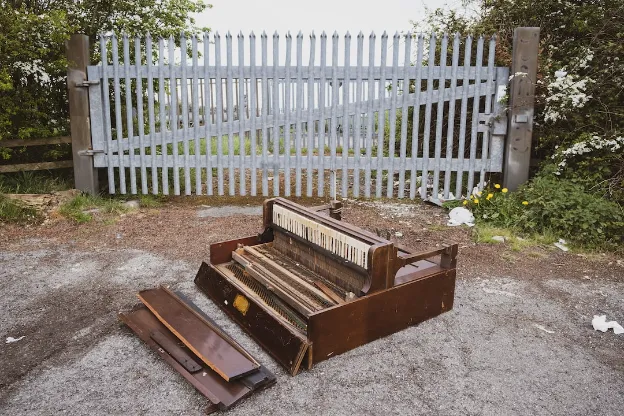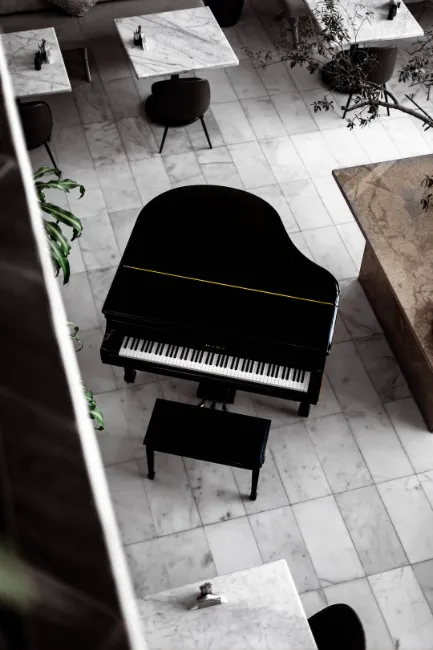21 Worst Piano Brands to Buy at a Bargain: What to Avoid

As a Piano Technician & Tuner it seems like there are many, many piano brands to avoid which made it difficult to determine exactly where to start this list!
Most of the worst pianos in the United States are typically old uprights that are meant for home use.
Whether it's kept for sentimental purposes, aesthetics, or piano lessons, poor quality instruments are abundant in homes across America.
Anyhow, who'd want to get rid of a "perfectly good" piano, especially when a new piano costs a lot more?
The thing that many professional musicians know is that starting out on poorer quality instruments discourages many beginners from developing their musical talents and end up giving up early on.
What's worse, is that many pianos sold in the aftermarket claim that they're in "good condition" by those who are inexperienced. Most people want to see "how much they can get for it" in the used piano market.
It's difficult to know which musical instruments are of better quality if you're not a concert pianist, and have confidence that you're getting a great deal.
To help with this discussion, I have compiled a list of brands with the help of colleagues in the piano industry (with decades of combined years of experience) to determine which brands have the worst low-end pianos.
What are the worst piano brands?
Here's the list of 21 worst piano brands for both upright and grand pianos. All of these pianos should be on your radar, especially when purchasing at a bargain from regular folks.
*Disclaimer: These judgements are based on lower-end models that were typically produced to reach the mass market, which particularly applies if the piano hasn't been evaluated, regulated, tuned, and voiced by piano professionals. Improper due diligence is commonplace when buying from individuals instead of reputable piano dealers.
List of 21 worst brand name pianos:
Cable Nelson
Everett
Gulbransen
Hallet & Davis
Henry F Miller
Hyundai
Janssen
Krakauer
Kingsburg
Kranich & Bach
Koehler & Campbell
Lester
Maeari
Nordiska
Otto Attenburg
Pramberger
Rice-Mary
Samick
Schafer & Sons
Sojin
Wurlitzer
This list was influenced and peer reviewed by piano professionals. All of whom are RPT's (Registered Piano Technicians) in the Piano Technicians Guild.
What makes a bad piano?
Without going through the details of each particular brand, below are the common characteristics that make these pianos particularly troublesome, especially in the eyes of moderately advanced players.
Many of the pianos in the list of worst piano brands are regularly serviced, to the dismay of the piano technician (unbeknownst to the owner).
Sound Quality
Even after a piano from this list gets tuned, a poor quality piano still doesn't sound nice even after having professional service (It reaches its own ceiling of potential).
It's not unusual that customers won't be able to tell the difference, even after the work has been performed.
If a piano on this list is the first piano for a beginner pianist, it will be disheartening to practice on the instrument.
In a better quality piano, you should easily be able to tell the difference after it has been tuned because the overall quality is enhanced on a "good piano".
Tuning Stability
Any acoustic piano has a pin block that wears out overtime, which is primarily due to seasonal changes that bring changes in temperature and humidity.
If the piano is placed in an uncontrolled environment, the impact from years of seasonal changes can compromise the longevity of having a lasting piano tuning by a piano service professional.
The best pianos have a tight pin-block that holds the tune of the piano very well, however in a low quality instrument it's more common that the pins are not held in the pin-block very tightly, which can contribute to tuning instability.
Piano Lifespan
While it's unfair to say how bad a piano is based entirely from age, it is important to also consider how much better a new instrument is due to small incremental improvements in piano design overtime.
The pianos from this list were previously good pianos and were a better choice at the date and time they were purchased.
As the felts age, they become crusty which reduces the ability of the dampers to dampen the sound of the resonating strings after the pianist releases the note.
The hammers become hard which makes the tone of the piano abrasive to the ear.
The strings begin to rust which presents a greater risk of breakage as the years go on.
It's often that pianos from this list have strings with rust that may break after tuning it after a long period without tuning.
Damage
It's easy to find soundboard cracks as evidence of damage on these older used pianos that simply aren’t worth the repair for the piano owner nor piano rebuilding factories.
Soundboard cracks can sometimes be discovered by hearing a paper-like "buzz." (as opposed to a metallic one)
Loose bridge pins may be fixed, although depending on how the repair goes, it may compromise the tonality and sustain of the affected section in the piano.
Rib separation is another source for paper-like "buzzes" that is not feasible to repair.
It's common to need repairs where it's no longer possible to find replacement parts.
Broken strings can be found; replacement strings take months to adjust to proper tension and fall out of tune easily, additionally they may have difference in inharmonicity with the old strings causing it to sound like it is out of tune even though it is tuned as closely as possible.
Materials
Some soundboards in low quality pianos are made up of composite material instead of spruce, lowering the quality of sound and value of the instrument.
Playing a piano with low quality materials can be an unfulfilling experience for any beginner musician.
After practicing for many hours, it becomes easier to discern that the overall sound of the piano is noticeably unpleasant for those students who practice.
Pianos constructed from poor quality materials go out of tune more often, have strings with an unsatisfactory "tinny" tone, and an action that functions at an elementary level.
Size
The biggest issue with smaller pianos is the sound quality.
The size of the pianos referred to in this list of the worst piano brands mainly refer to the spinets or console pianos which are among the smallest size upright pianos that were once offered.
As the size of piano decreases its strings are shorter which truncates the overall sound potential of the instrument.
The action is much smaller which eliminates the ability for a skilled musician to play difficult passages.
Small pianos are often seen as worse than larger ones due to their reduced sound quality and limited playing potential.
While small pianos can be useful in certain situations where space is limited, they should not be used as a primary instrument for serious practice or beginners.
Smaller pianos tend to have shorter strings, a smaller soundboard, and cheaper parts which reduce sustain, volume, and tone compared with larger instruments.
Generally speaking, larger pianos produce a wide range of sounds that make for the perfect piano.
Too Long Didn't Read (TLDR):
The biggest problem with pianos in the list of worst piano brands lies in the way that they make you feel when you play them.
Due to the manufacturers producing pianos at a price point for the mass market, these pianos are unable to deliver a really nice sound to begin with and they often become neglected which leads to them sounding and playing even worse.
The good news is that locating a reputable piano dealer is easier than ever, and is the best way to find a lifelong piano at affordable prices.





